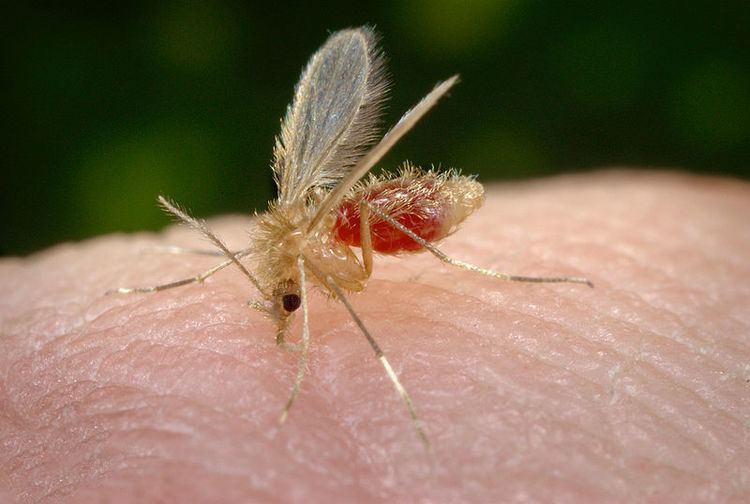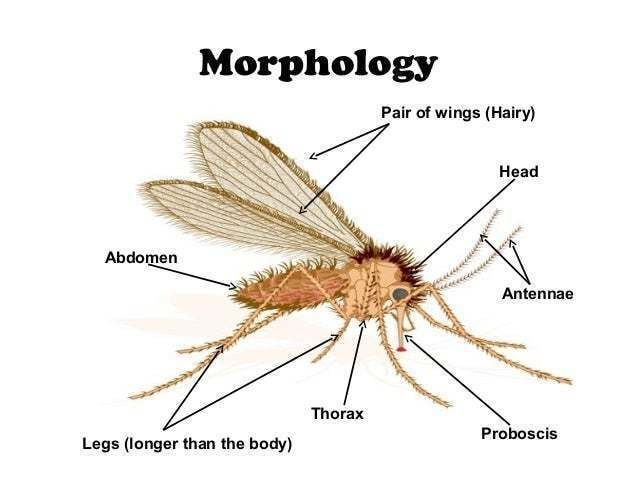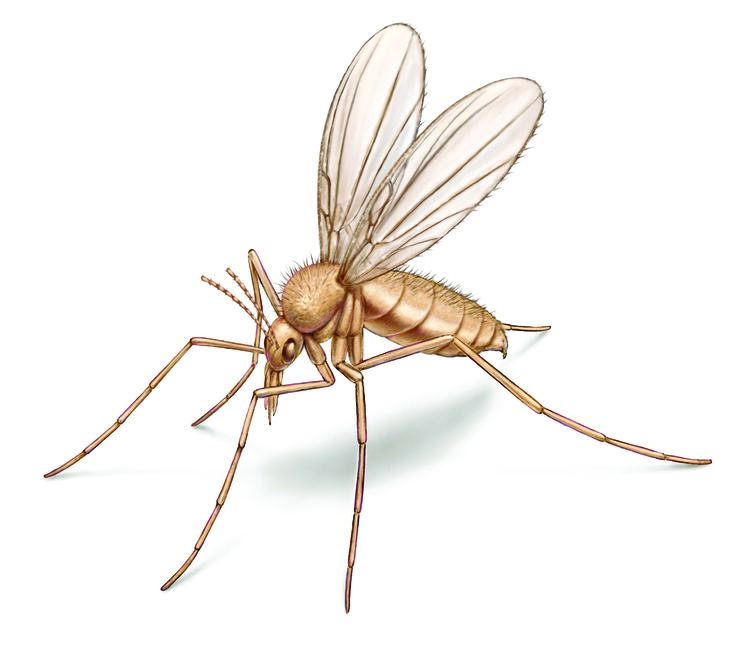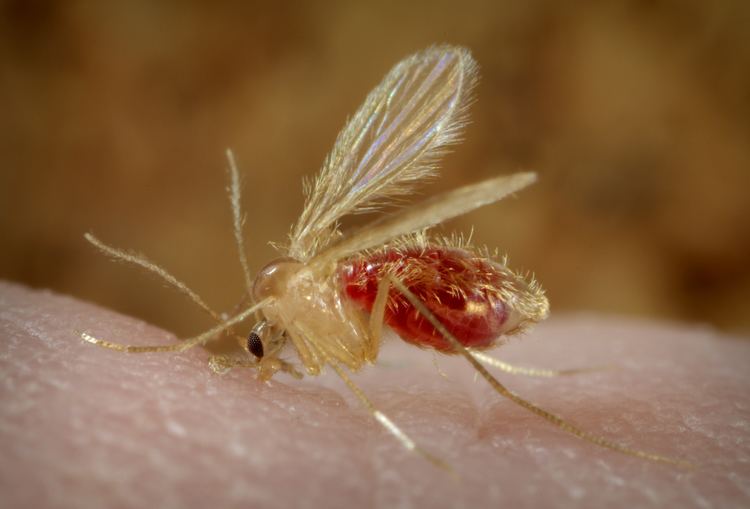 | ||
Representative species Lutzomyia, Phlebotomus papatasi, Phlebotomus perniciosus Similar Lutzomyia anthophora, Lutzomyia, Phlebotominae | ||
Sandfly (or sand fly) is a colloquial name for any species or genus of flying, biting, blood-sucking dipteran (fly) encountered in sandy areas. In the United States, sandfly may refer to certain horse flies that are also known as "greenheads" (family Tabanidae), or to members of the family Ceratopogonidae, also known in Florida and elsewhere as a sand gnat, sandflea, no-see-um (no-see-em, noseeum), granny nipper, chitra, punkie, or punky. Outside the United States, sandfly may refer to members of the subfamily Phlebotominae within the Psychodidae. Biting midges (Ceratopogonidae) are sometimes called sand flies or no-see-ums (no-see-em, noseeum). New Zealand sandflies are in the Austrosimulium genus, a type of black fly.
Contents

While horse flies are large flies, noseeums (sandfleas) and some Old-World sandflies are tiny midges. Sandfly bites may leave large, red itchy bumps that may turn into a rash. These bumps are frequently several times as itchy as mosquito bites, and tend to last longer as well.

In the various sorts of sandfly only the female is responsible for biting and sucking the blood of mammals, reptiles and birds; the protein in the blood is necessary for the production of eggs, making the sandfly an anautogenous reproducer.

Some sandfly genera of the Phlebotominae subfamily are the primary vectors of leishmaniasis and pappataci fever; both diseases are confusingly referred to as sandfly fever. In the New World, leishmaniasis is spread by sand flies of the genus Lutzomyia; in the Old World, the disease is spread by sandflies of the genus Phlebotomus. Belize and Honduras are notorious in the Caribbean for their sandfly populations and travel pages frequently warn tourists to bring bug spray containing high concentrations of DEET.

Popping of my infected sandfly bite
Viruses
Among the viruses that sandflies can carry is the Chandipura virus, which, as a cousin of rabies, is very deadly. There was an outbreak in India in 2010.
Protozoa
Leishmaniasis, a disease caused by several species of the genus Leishmania, is transmitted by various sandflies.
Leishmania donovani causes spiking fevers, hepatosplenomegaly, and pancytopenia. It can be diagnosed though microscopic review by visualizing amastigotes in containing macrophages, and is treatable with sodium stibogluconate.
Prevention
Over-the-counter repellents with high concentrations of DEET or picaridin are proven to work, but may not be suitable for some people, e.g. people with sensitive skin and pregnant women.
A particular extract of Lemon Eucalyptus oil (not the essential oil) has now been shown to be as effective as DEET in various studies.
Most information on repellents focuses on mosquitoes, but mosquito repellents are effective for sandflies and midges as well.
Cultural views
According to Māori mythology, after Tu-te-raki-whanoa, a deity, completed the creation of Fiordland's landscape, its breathtaking beauty was such that it rendered the people idle, as they were captivated by the scenery and ceased their labors, simply standing in admiration. The goddess Hine-nui-te-pō became angry at these unproductive people, so she created the sandfly to bite them and get them moving".
These sand flies were able, according to another Māori legend, to revive the dead hero Ha-tupatu.
In moral philosophy, the nature of sandflies is used as an analogy for a particular implied inference, the "noseeum inference", where one fallaciously concludes that since one cannot see something, it therefore cannot exist.
